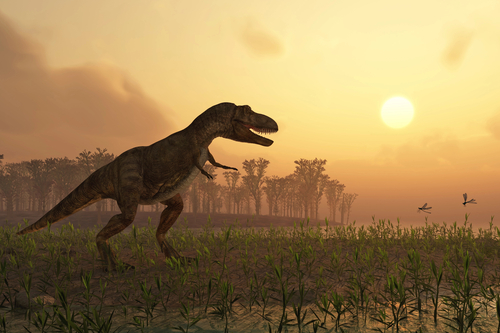
The long-standing image of dinosaurs as scaly, reptilian behemoths has been transformed by a groundbreaking discovery in Siberia, suggesting that the presence of feather-like structures was widespread across various dinosaur lineages. This find sheds new light on the evolution of feathers and their possible functions in ancient species.

In eastern Russia, an international team of researchers uncovered hundreds of bones and several skulls of the dinosaur Kulindadromeus zabaikalicus, a herbivorous ornithischian that roamed approximately 160 million years ago.

This small, bipedal dinosaur was originally thought to have possessed scales, but new evidence has emerged that it also had a variety of both scales and feather-like filaments.

This discovery expands the scope of where feathered dinosaurs could be found, adding to the growing list of sites in Germany, Canada, Brazil, and across China and North Korea, suggesting a future hotbed of research in Siberia.

Kulindadromeus exhibited diverse types of body coverings, including scales on the legs and tail, but also simple filaments across the head, neck, and body.

Remarkably, it also presented multiple filaments emanating from a single point on its upper arms and legs – a complexity closer to that of modern feathers.

The implications of this finding are profound. Previously, feathers or feather-like structures were primarily associated with theropod dinosaurs – the lineage leading to modern birds.

However, the discovery of complex filament structures in ornithischians, like Kulindadromeus, suggests that such features may have been present in the common ancestor of all dinosaurs.

The research indicates that these structures may have evolved for a variety of reasons beyond flight, such as insulation or display. This conjecture is supported by similar findings in China, where the dinosaur Wulong bohaiensis was found with mature feather structures despite being a juvenile.

Dr. Ashley Poust, part of the team that studied Wulong, points out that this challenges our understanding of dinosaur growth patterns and the development of feathers.

Moreover, the discovery of the new species Tyrannosaurus mcraeensis with distinct jaw features from its famous relative T. rex, indicates a diversity in theropods that could extend to feather-like structures as well.

Although the exact relationship between these structures across different dinosaur species remains to be clarified, it is becoming increasingly likely that feathers were not limited to the theropod lineage.

These findings are critical for understanding the evolution of feathers, which impacts a wide range of biological functions, from thermoregulation and mating to the origins of flight. While the classical image of dinosaurs might not yet be ready for a full makeover, it is tempting to envision a prehistoric world where dinosaurs like Stegosaurus and Brachiosaurus sported fuzz or filaments alongside their more familiar features.

The study, led by Pascal Godefroit and colleagues, paints a picture of an ancient world teeming with life, where feather-like structures were potentially a common trait among diverse dinosaur groups.

It also paves the way for more extraordinary discoveries as paleontologists continue to explore the rich fossil deposits around the globe, unearthing new species and expanding our understanding of Earth’s distant past.

